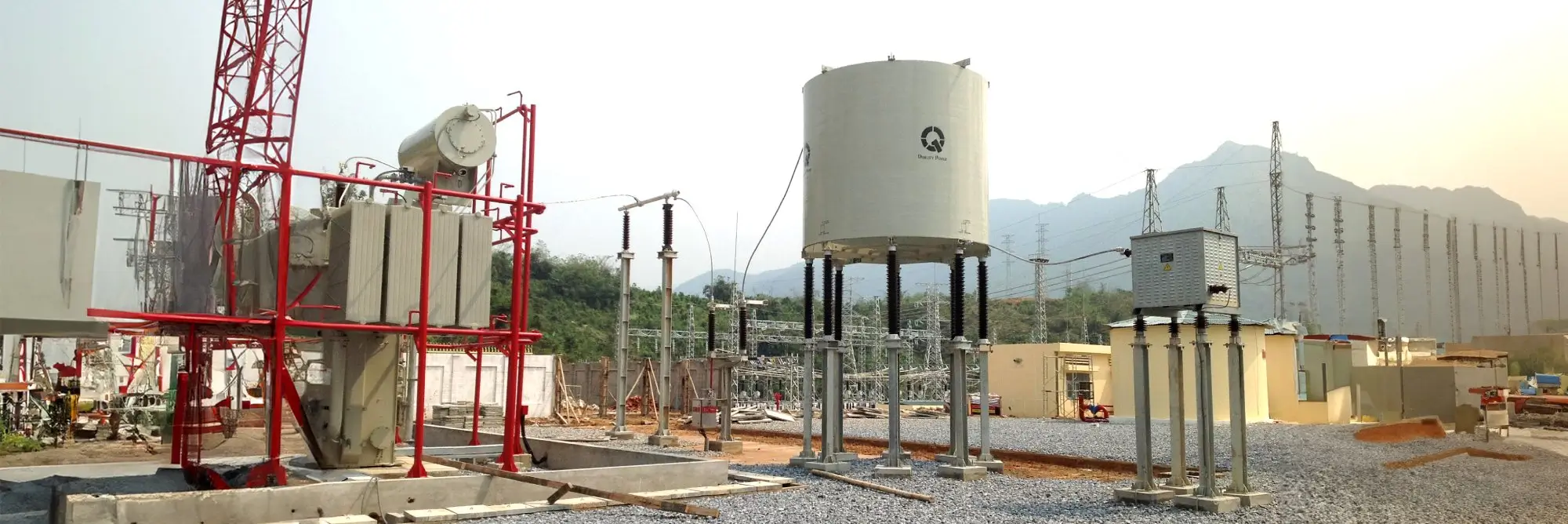
Reactors > Series Reactors
Neutral Grounding Reactors
Neutral Grounding Reactors (NGRs) play a pivotal role in three-phase power systems by limiting fault currents and enhancing system stability and safety. These single-phase reactors are strategically connected between the neutral point of a transformer and the earth, providing a controlled path for fault currents and reducing the risk of equipment damage and system disruptions.

Design and Functionality
1 Connection and Placement:
- Neutral-Earth Connection: NGRs are installed between the neutral point of a transformer and the ground. This connection ensures that during a fault, the current is directed through the reactor, thereby controlling the fault current magnitude.
- Single-Phase Configuration: Despite being used in three-phase systems, NGRs are single-phase devices. They are specifically designed to handle the unique requirements of grounding in such systems.
2 Fault Current Limitation:
- Controlled Fault Path: During a fault condition, such as a ground fault, the NGR provides a high-impedance path. This limits the magnitude of the fault current, preventing damage to transformers, generators, and other critical infrastructure.
- Reduction of Fault Impact: By limiting fault current, NGRs reduce the thermal and mechanical stress on electrical equipment, enhancing the overall reliability and longevity of the power system components.
3 Momentary Overvoltage Reduction:
- Instantaneous Fault Breaking: During the breaking of instantaneous fault currents, neutral-earthing reactors help to reduce momentary overvoltages. This is crucial for protecting the insulation of system components and preventing transient overvoltage damage.
- Transient Mitigation: The reactors absorb and dampen the energy associated with transient overvoltages, ensuring smoother system operation and reducing the risk of insulation breakdown.
4 Normal Operating Conditions:
- Low Voltage Across Reactor: Under normal operating conditions, the voltage across an NGR is relatively small. Consequently, the current flowing through the reactor is also minimal, having a negligible impact on the overall system performance.
- Standby Mode: Essentially, NGRs remain in a standby mode during normal operations, ready to activate only during fault conditions.
5 System Fault Conditions:
- Increased Current During Faults: When a system fault occurs, the current through the NGR increases significantly. The reactor must be designed to handle these elevated currents for specified durations, typically defined in seconds.
- Thermal and Mechanical Design: The design of NGRs must account for the thermal and mechanical stresses imposed during fault conditions, ensuring they can withstand the increased current without failure.
6 Insulation Requirements:
- Neutral Insulation Correspondence: The insulation requirements of an NGR correspond to the insulation level of the neutral point in the power system or the shunt reactor where it is installed. This ensures compatibility and safety within the system.
- Earth Terminal Insulation: For the earth terminal, a reduced insulation level may be appropriate. This non-uniform insulation approach optimizes cost and material usage while maintaining safety and performance standards.
Applications and Benefits
1 Enhanced System Protection:
- Equipment Safety: NGRs protect transformers, generators, and other critical equipment from the destructive effects of high fault currents, reducing the risk of catastrophic failures and costly repairs.
- Fault Containment: By limiting fault current, NGRs help to contain and isolate faults, minimizing the spread of disturbances across the power network.
2 Improved System Stability:
- Voltage Stability: During fault conditions, NGRs contribute to maintaining voltage stability by controlling overvoltages and preventing voltage spikes.
- Operational Continuity: The presence of NGRs ensures that power systems can continue to operate smoothly and safely even in the event of faults, enhancing overall system reliability.
3 Application in Various Power Systems:
- Utility Grids: In large utility power grids, NGRs are essential for managing grounding and fault currents, ensuring the stability and safety of widespread networks.
- Industrial Systems: In industrial power systems, NGRs protect sensitive equipment and processes from the impact of electrical faults, ensuring continuous and efficient operation.
4 Cost-Effectiveness:
- Reduced Maintenance Costs: By preventing damage to critical components, NGRs help to reduce maintenance costs and extend the lifespan of electrical infrastructure.
- Optimized Design: The use of non-uniform insulation levels where appropriate helps to optimize the design and cost of NGRs without compromising on performance or safety.
5 Compliance with Standards:
- Safety Regulations: NGRs ensure compliance with safety standards and regulations, providing a safe grounding solution that meets industry requirements.
- System Design Standards: The design and application of NGRs align with system design standards, ensuring compatibility and effective integration within existing power systems.


